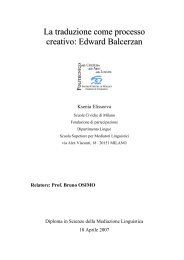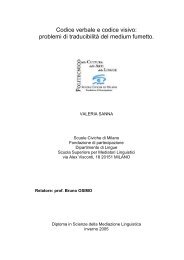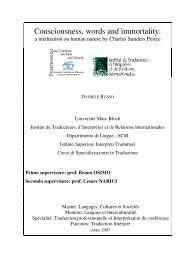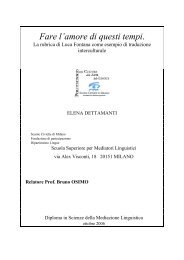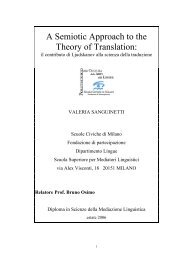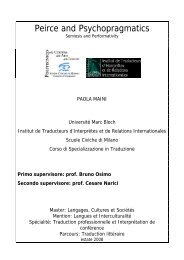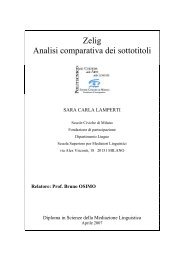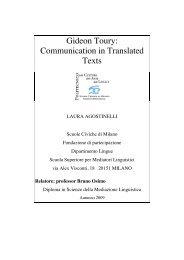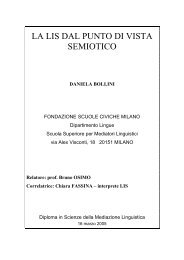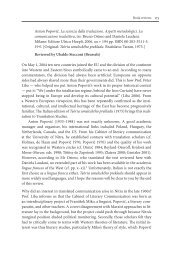Ksenia Elisseeva - Bruno Osimo, traduzioni, semiotica della ...
Ksenia Elisseeva - Bruno Osimo, traduzioni, semiotica della ...
Ksenia Elisseeva - Bruno Osimo, traduzioni, semiotica della ...
Create successful ePaper yourself
Turn your PDF publications into a flip-book with our unique Google optimized e-Paper software.
It is evident that as a rule the majority of cards have a single meaning.<br />
Only in particular cases do some cards acquire special meanings or nuances,<br />
and here context begins to play an essential role.<br />
Cartomancy proceeds in the following manner. Pairs of cards are drawn<br />
consecutively from the deck until the card appears that is the basis for the<br />
fortune-telling and constitutes the person's card. The card paired to it is “next to”<br />
and “close to” the person. The person's card (1) is placed in the center, the rest<br />
of the cards are gathered into the deck again and reshuffled, and then the cards<br />
are laid down. We shall omit the details of laying out the cards as essentially<br />
unimportant and shall describe only the result of the distribution. Two cards (2,<br />
3), and then four more (4-7), are placed on the person's card; they are what the<br />
person has “on his heart”. The other cards are arranged in eight groups around<br />
the center in the following way:<br />
22<br />
20, 21<br />
24<br />
23<br />
27<br />
25, 26<br />
2, 3<br />
1<br />
16, 17 18, 19<br />
4, 5, 6, 7<br />
8, 9<br />
10<br />
12<br />
11<br />
13, 14<br />
15<br />
Nine cards obviously remain outside the distribution; they are discarded<br />
and do not take part in the fortune-telling. Cards 8-15 describe the person's past<br />
(“what was”), cards 16-19 describe the present (“what is”), and cards 20-27<br />
describe the future (“what will be”).<br />
14



